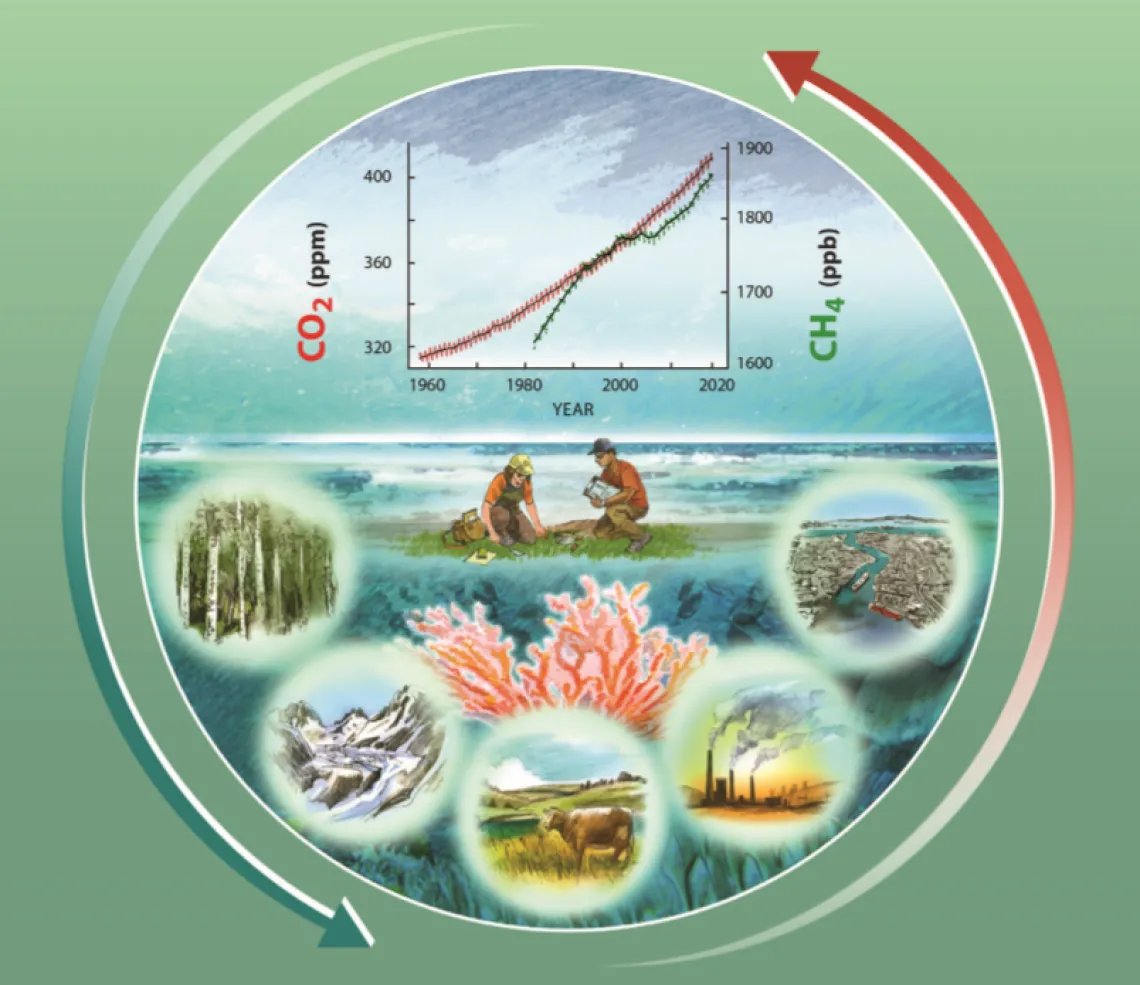Second State of the Carbon Cycle Report Released

The U.S. Global Change Research Program released their second State of the Carbon Cycle Report (SOCCR2) on Nov. 23, along with their National Climate Assessment report.
According to the Executive Summary, the report “examines the patterns of carbon stocks and fluxes—collectively called the “carbon cycle.” Emphasis is given to these patterns in specific sectors (e.g., agriculture and energy) and ecosystems (e.g., forests and coastal waters) and to the response of the carbon cycle to human activity. The purpose of SOCCR2 is to assess the current state of the North American carbon cycle and to present recent advances in understanding the factors that influence it. Concentrating on North America—Canada, the United States, and Mexico— the report describes carbon cycling for air, land, inland waters (streams, rivers, lakes, and reservoirs), and coastal waters.”
The report includes a number of important findings, including that “Globally, atmospheric carbon dioxide (CO2) has risen over 40%, from a preindustrial level of about 280 parts per million (ppm) to the current concentration of more than 400 ppm. Over the same time period, atmospheric methane (CH4) has increased from about 700 parts per billion (ppb) to more than 1,850 ppb, an increase of over 160%. Current understanding of atmospheric carbon sources and sinks confirms the overwhelming role of human activities, especially fossil fuel combustion, in driving these rapid atmospheric changes.”
The full report may be found at https://carbon2018.globalchange.gov/.

